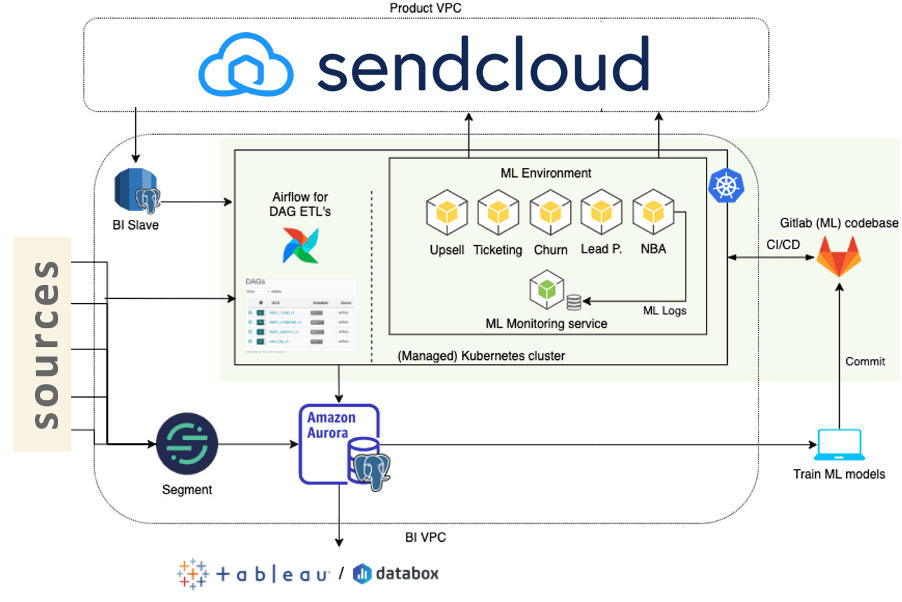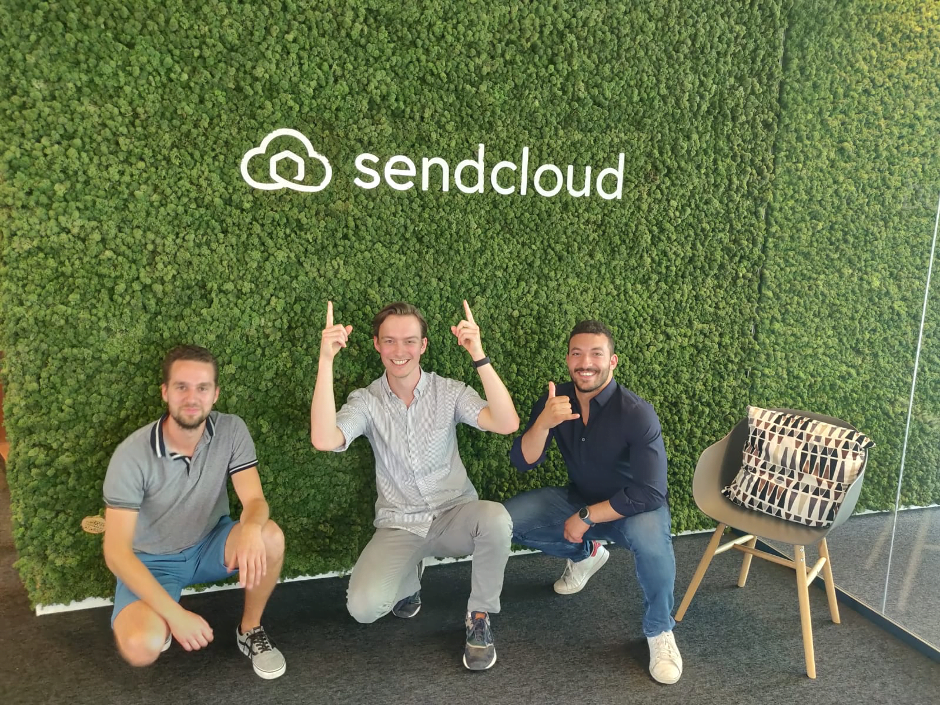SendCloud: Implementing Customer Lifetime Value for a digital freight forwarder
Scaling faster by using Machine Learning
Sendcloud, often referred to as the “Adyen for shipping”, is an Eindhoven-based scale-up and one of the fastest growing companies in the Netherlands. During the peak of the Corona crisis, we started off with our ML audit, to draw the ML roadmap and blueprint. At time of writing, Enjins works together with Sendcloud at full-speed to realize this roadmap. This means that we setup the ML infrastructure and together with the specialists of Sendcloud in order to implement and iterate to more and more accurate versions of the ML models.
Data helps scale-ups to scale faster
As Sendcloud grows, the team experiences the struggles many scale-ups go through. Where the focus in the first years lie on pure growth, sales and marketing, focus shifts slowly to long-term customer value. Machine Learning holds a logical set of techniques to increase customer value by focusing on leads and customers which hold long-term value, and improve retention among those valuable customers.
How do we make sure these models cooperate and increase the value of Sendcloud, rather than having ‘competing’ models?
The challenge of Sendcloud
In order to make Machine Learning a success, it’s crucial to strive and optimize for the same goal. Let’s assume you don’t, and let’s say you got two models, where one model is optimized for lead conversion and the other one is trying to reduce churn. Chances are high that sales focus on the easy – but often rather useless – leads which converse easily, but also churn easily. On the other hand, customer support will have a hard time making sure those same customers don’t churn in the first couple of months. The result: you end up with two models (and teams!) competing with each other.
Our solution and approach for Sendcloud
It’s crucial the models (and teams) strive for one, unified target variable, in this case the net customer lifetime value (or in short: customer value), which comes down to the following formula:
Net CLTV = (MRR – MRC) * lifetime – CAC
MRR = Monthly recurring revenue
MRC = Monthly (recurring) costs
Lifetime = lifetime of a customer
CAC = cost of acquisition
So, how does steering on net CLTV affect the models and teams?
- Sales & marketing: focus on the most valuable leads, which represent long-term value for the customer and are unlikely to leave the company quickly. In the end, sales and marketing will prioritize their actions based on net CLTV, and so will the models do.
- Customer success: decrease MRC by automating what can be automated, and focus on the valuable customers first when dealing with issues and support.
- Product: focus on features that increase customer satisfaction, increase sales and reduce churn.
During the peak of the Corona crisis, we started off with our (completely remote) ML audit, to draw the ML roadmap, ML blueprint and the business case behind each use case. The four most valuable use case are:
- Churn engine: how can we increase lifetime using the patterns in customer behaviour?
- Lead prediction engine: which lead will convert to a valuable customer?
- Upsell engine: which customers are ready for a higher plan to increase MRR?
- Ticket automation engine: how can we reduce costs by automating what can be automated?
The Machine Learning infrastructure we implemented
The first step: setup the ML infrastructure based on our ML blueprint, which you can find below:

A crucial component in this blueprint is our ML deployment platform: Deeploy. Using this software, we can easily deploy (new versions) of the ML models, and monitor and explain the behaviour of our ML models.
After setting up the infrastructure, we then build the first ML engines, which are the churn and lead prediction engines. Together with the specialists of Sendcloud, we develop and implement these models and iterate to more and more accurate versions, which support the sales and customer support teams at Sendcloud.
The first few months were an interesting ride, which tastes like more! Together with us, 27 new colleagues started at Sendcloud to boost growth even further, slowly taking over the shipping market in Europe. We’re happy and proud to be part of this adventure!
Please fill in your e-mail and we'll update you when we have new content!


 Follow us on LinkedIn!
Follow us on LinkedIn! Check out our Meetup group!
Check out our Meetup group!